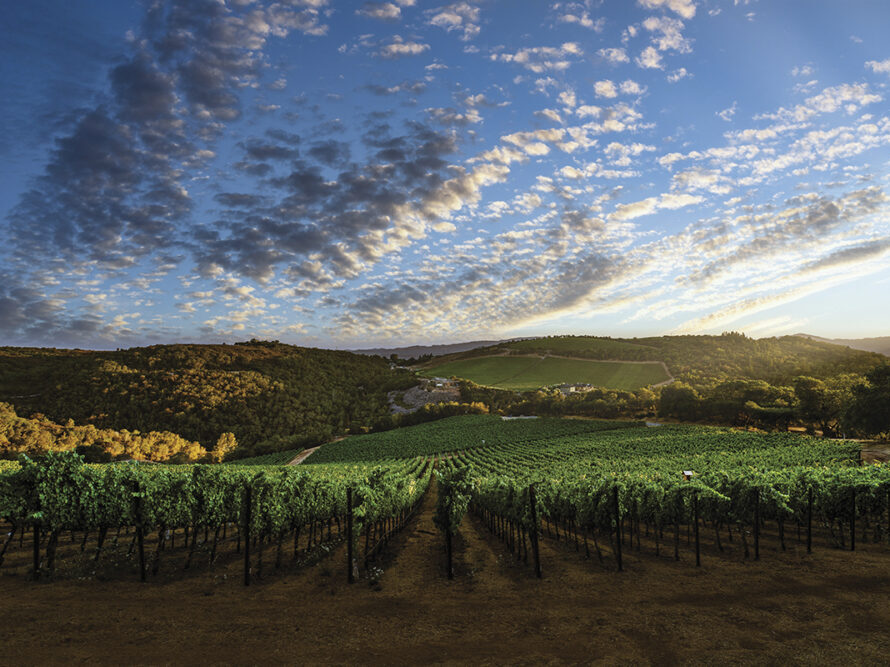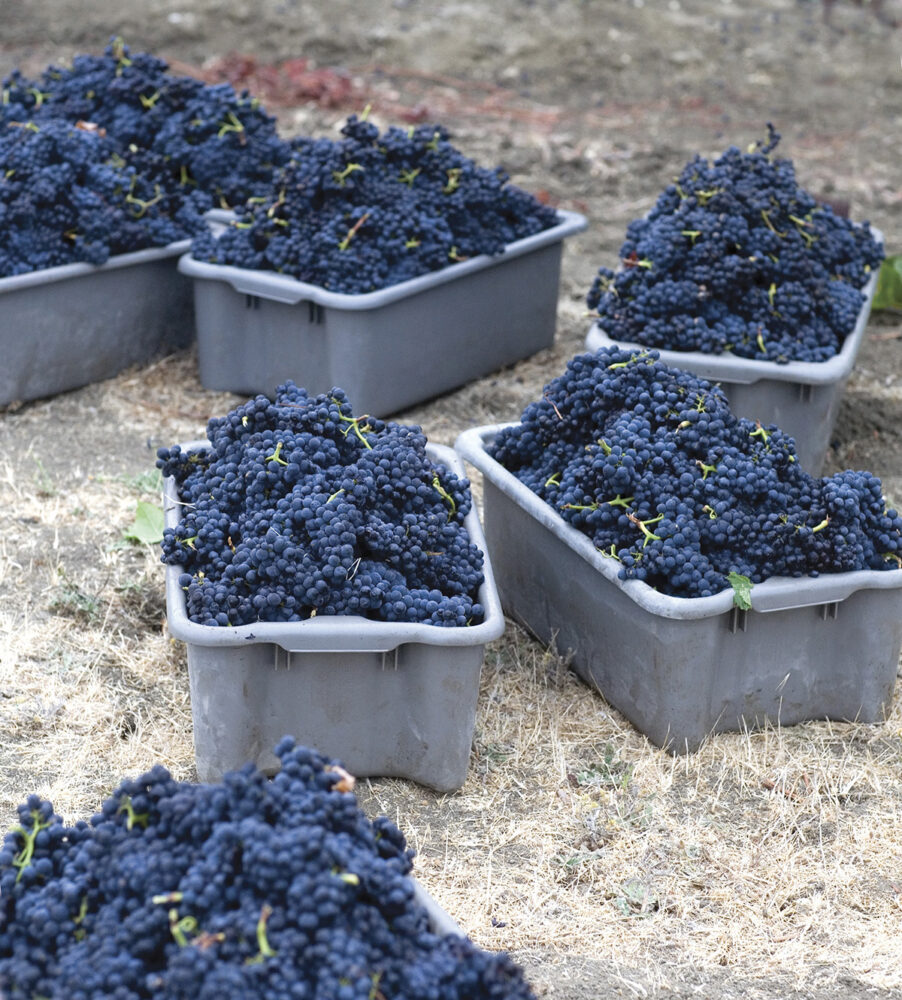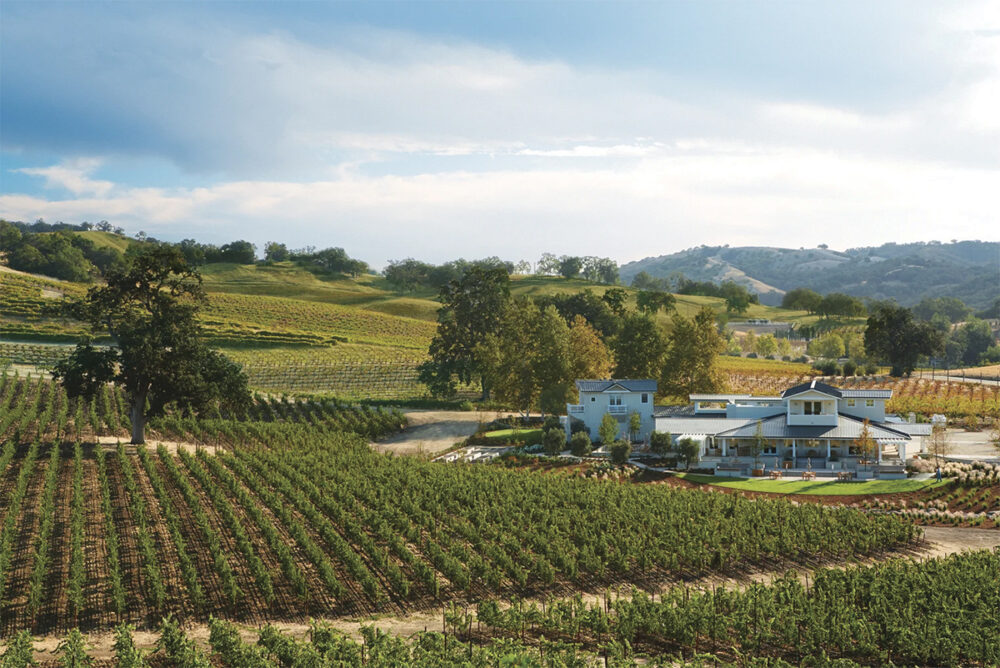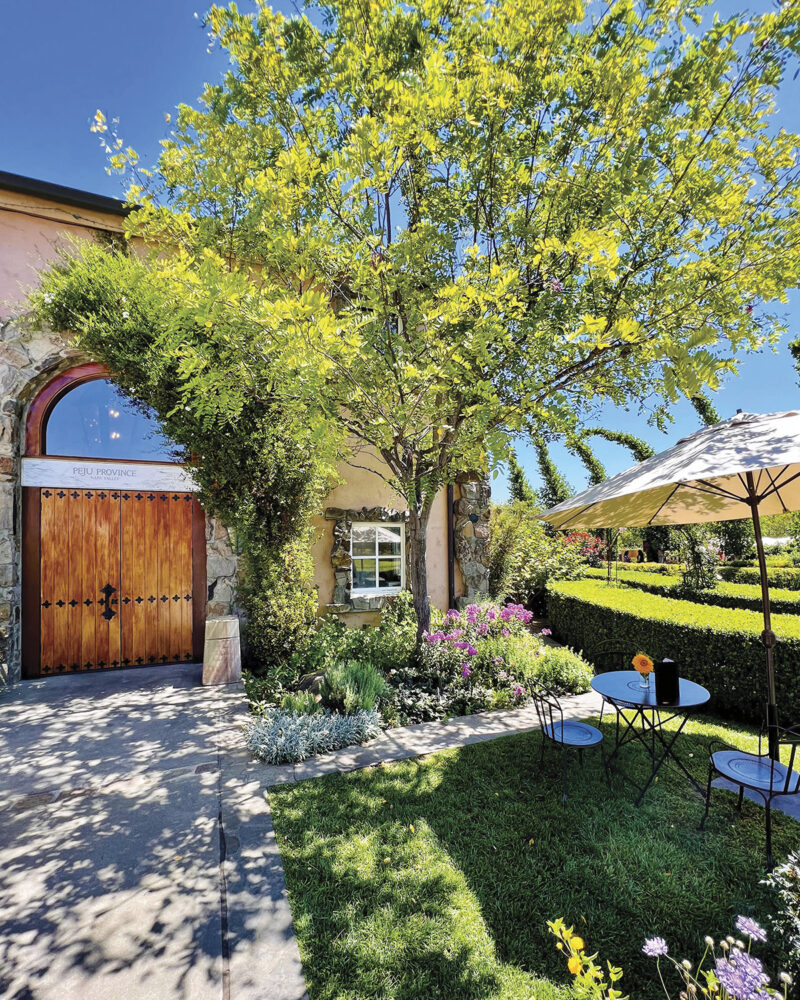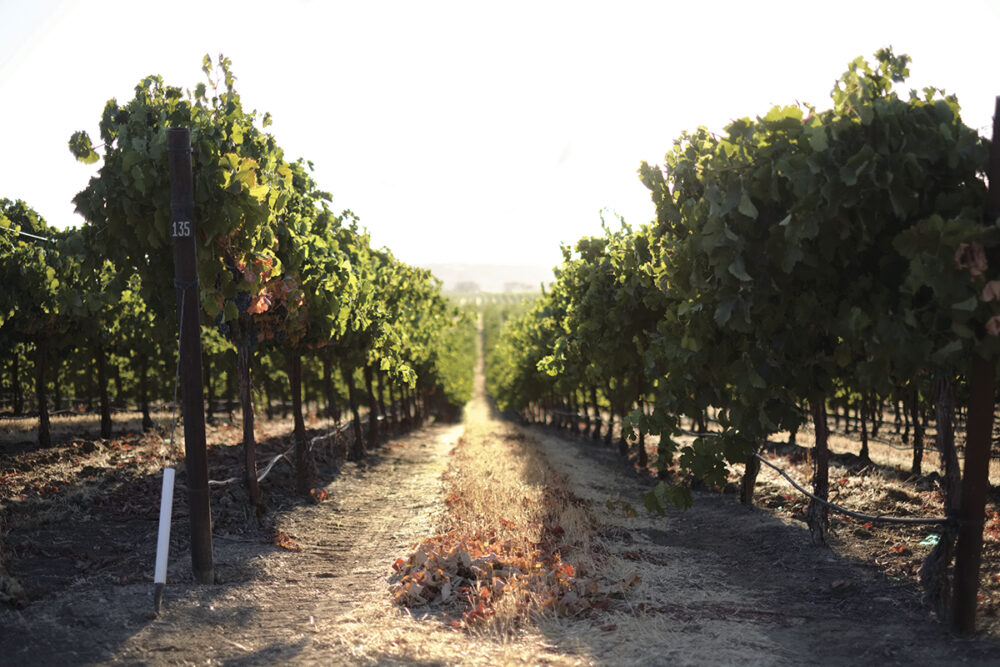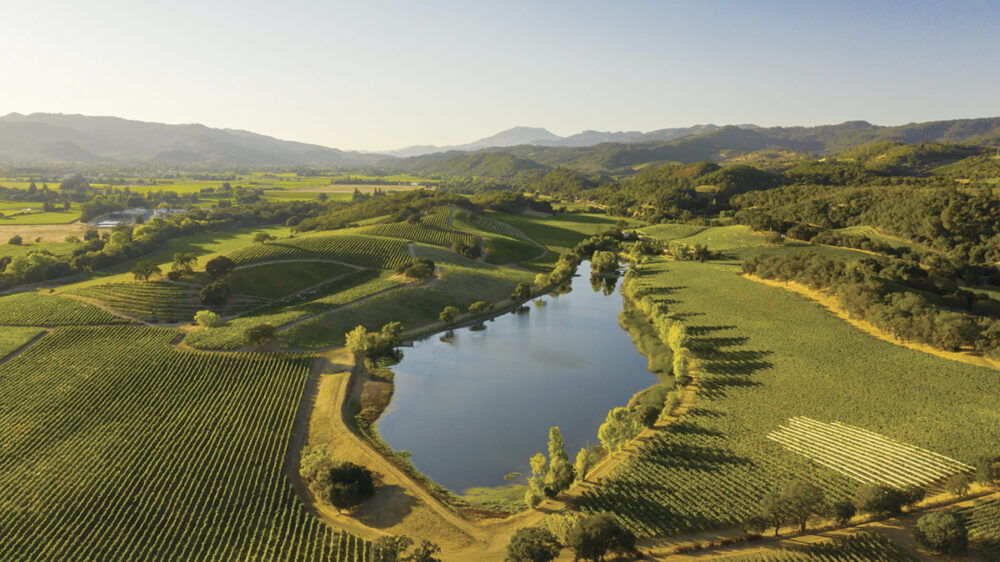In recent years, since California has seen a surge of heatwaves and wildfires in winegrowing regions across the state, there has been talk of the future of California grape growing. In particular, writers and critics have questioned the longevity of Cabernet Sauvignon as king, and consumers have grown wearier of the impact of climate change on this beloved varietal.
Bordeaux grape varieties have always thrived in California, and wine enthusiasts agree that Napa has been the premier locale for growing these grape varieties. And in recent years, the quality of Bordeaux varietals from Paso Robles has surged to meet the expectations for balance and complexity that Napa Valley has set for California’s Bordeaux-style wines. But how are these regions adapting to the effects of climate change?
Growing Grapes Today: Adaptation is Key
In Napa Valley and Paso Robles, education, research, and technology have been at the forefront of change. “There has been so much new research and technology to lean on in recent years that have allowed vintners to make more informed choices regarding rootstock, clones, irrigation requirements, and more,” said Sara Fowler, winemaker at PEJU in Napa. In fact, research and new technology have been vital for great grape growers and wise winemakers who are working against the strong effects of climate change.
“Today’s environment is challenging us to think a little differently,” said Rebekah Wineburg, winemaker at Quintessa in Napa. “We’re seeing weather events that require us to work with more precision and invest in infrastructure to mitigate certain impacts.”
In addition to Wineburg, other winemakers in the Valley, such as Tor Kenward (TOR), Sara Fowler (PEJU), Jesse Fox (Sequoia Grove), and Andrew Delos (Far Niente), admit that it’s now more important than ever to focus on the right rootstock and clonal selection, row orientation, canopy management during the robust parts of the growing season, shade cloth for extreme heatwaves, and meticulous water management to withstand the effects of drought. “These measures are understood to be the backbone of successful grape growing in our new environment,” stated Andrew Delos, winemaker at Far Niente.
In Paso Robles, JUSTIN’s winemaker Scott Shirley is investing in the region’s winegrowing future with the help of climatologists. “We’re working with a climatologist group that has developed a planning tool to predict our region’s forecasts for the next five, 10, 30+ years. We are collaborating on the modeling and thresholds for everything from extreme heat and extreme cold frosts,” Shirley said. “We hope to see success with our adaptations, ensuring we’re a part of the solution and not the problem.”
Similarly, in Napa Valley, local grape growers and winemakers have invested in the fight against wildfires and mitigation efforts in the face of drought. “Producers and growers are very focused and are putting resources and money into making Napa Valley safe from future devastating fires,” said Kenward. At PEJU, Fowler furthered, “there is more research on how to potentially prevent smoke taint if and when there are fires and conversations around how to manage water stress in drought years.” Many agree that organic and biodynamic vineyard practices are helping them adapt quicker to the effects of climate change. “We are fortunate to have opportunities and techniques at our disposal to stay consistent through time,” Wineburg stated. And Delos agreed that quality hasn’t wavered: “As we lean on the viticultural advancement, our wine’s aromas, flavors, and structures continue to meet our expectations.”
Growing Grapes Tomorrow: Cabernet and Beyond
When speaking with grape growers and winemakers in Napa Valley and Paso Robles, it’s clear that producers are holding strong with Cabernet Sauvignon, though working more with other Bordeaux varieties to strike that balance between ripeness, acidity, and tannin—blending in small amounts of different Bordeaux varieties to find that quintessential complexity that makes California Cabernet Sauvignon so coveted.
For Cabernet Sauvignon purists, there is more emphasis on blending individual lots, blocks, and vineyards to uphold greatness. “Most every finished, bottled wine is a blend,” admitted Shirley, “whether a blend of grape varieties, vineyard blocks, or clones—even a ‘vineyard designated’ wine is likely to have been aged in a variety of barrel types.”
By law, California Cabernet Sauvignon needs to include 75% Cabernet Sauvignon to be labeled as such. In most cases, winemakers are working with other Bordeaux varieties behind the scenes, blending them into their Cabernet Sauvignon, curating the best expression of this varietal. And while this technique is not new in California, it has become more important to rely upon in the face of climate change.
“Cabernet is still king, despite some rumors that drift in and out of conversations,” stated Kenward. “Cabernet Franc and Petite Verdot have gained in popularity. I’ve noticed a significant uptick in the quality of wines made from these grapes,” he admitted. Wineburg furthered, “Today, there is more interest in Cabernet Franc and Carménère, which has proven successful at our estate in Rutherford.”
In Paso Robles, Steve Peck, winemaker at J. Lohr, is looking to other lesser-known Bordeaux varieties, such as Gros Verdot and Saint-Macaire, to balance his wines. Saint-Macaire “is a real complement to our ‘dense but soft’ house style at J. Lohr, and we are cautiously optimistic about its future in the region.”
At Far Niente, Delos spoke of the resiliency of Bordeaux grape varieties: “Climate change has shown us that Bordeaux varietals deal well with heat, as long as we build the vineyards up and manage them correctly.” It’s clear that stronger focus and highly structured practices in the vineyards, coupled with talented vineyard management to implement the evolution of research and technology, will be the way forward in California grape growing. When tasting high-end bottles, wine enthusiasts can expect to hear more about lot, block, and vineyard blending. They should take note of the compositional makeup of wines labeled Cabernet Sauvignon. As producers look to the future, there should be a noticeable balance of seamlessly blended Bordeaux varieties to uphold that classic California Cabernet style.
The Future
With the intense amount of passion and determination—coupled with the resiliency of agricultural communities who have grown up together—regions like Napa Valley and Paso Robles are keeping their eye on the prize, despite the seemingly endless setbacks that climate change continues to pose. Remaining open to adaption to what works and continually striving to make the best wine possible without a rote recipe or style will determine producers’ future success—in Napa Valley, Paso Robles, and beyond in the great wine-growing state of California.
Shining 2019s from Napa & Paso
Far Niente 2019 Cabernet Sauvignon | Oakville, Napa Valley
This silky and seductive offering from this storied estate relies upon 4% Merlot, 1% Petit Verdot, and 1% Cabernet Franc to round out the Cabernet Sauvignon. The wine offers brilliant structure with notes of blackberry and spice; it’s full-bodied with beautiful length on the finish.
J. Lohr 2019 Cabernet Sauvignon | Adelaida District, Paso Robles
The Adelaida District has proven a stunning spot for Cabernet Sauvignon in Paso Robles. This Cabernet Sauvignon is blended with 2% Merlot and boasts cocoa and espresso aromas with a spiced palate full of black raspberry and sweet tobacco leaf notes.
JUSTIN 2019 Isosceles | Paso Robles
The Isosceles is a Bordeaux-style blend comprised of 79% Cabernet Sauvignon, 11% Cabernet Franc, and 10% Merlot. It sports a deep ruby/purple color with cassis, vanilla, and licorice aromas and a palate with a sophisticated whirlwind of flavor with notes of blackberry, baking spice, cured meats, and cedar. It’s a balanced wine with unfolding layers of quality and complexity.
Quintessa 2019 Quintessa | Rutherford, Napa Valley
The Quintessa is a true cinq cépages made up of 91% Cabernet Sauvignon, 4% Cabernet Franc, 2% Merlot, 2% Carménère, and 1% Petit Verdot. With great nuance and depth, this wine shows off the best of Napa with deep layers of tannin, dark ripe fruit, and a structure that’s immediately seductive while nodding to its ability to age.
PEJU 2019 Cabernet Sauvignon | Napa Valley
This is another brilliant Bordeaux-style blend with 82% Cabernet Sauvignon, 12% Merlot, 5% Petit Verdot, and 1% Malbec. The baking spice and floral-scented bouquet lead to a palate full of baking chocolate, blackberry, and wet earth. The firm tannins are framed by the wine’s full body and rounded texture.
Sequoia Grove 2019 Cabernet Sauvignon | Napa Valley
This Cabernet Sauvignon offers a fruit-forward bouquet of blueberry and black cherry cola. The composition of 80% Cabernet Sauvignon blended with 11% Merlot, 4% Cabernet Franc, 1% Petit Verdot, 1% Syrah, and 1% Grenache shows silky tannins and lovely notes of cherry and burnt sugar.
TOR 2019 Cabernet Sauvignon Beckstoffer To Kalon Vineyard | Oakville, Napa Valley
A genuinely inimitable wine from one of Napa’s most famed sites, the 2019 Cabernet Sauvignon Beckstoffer To Kalon Vineyard from TOR includes the largest percentage of Cabernet Franc in the wine’s history. It’s a rich and complex wine with refined tannins and tantalizing freshness. Aromas of cassis with hints of graphite give way to flavors of black cherry, smoked meats, and a touch of olive on the full-bodied palate.

